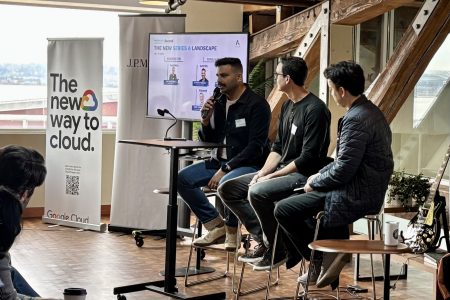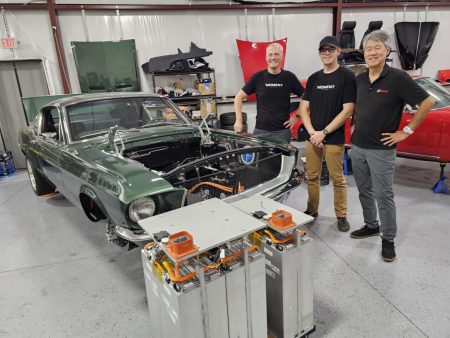The Visionary Behind Portal Space Systems: Jeff Thornburg’s Journey to Revolutionary Space Propulsion
In the quiet suburbs of Bothell, Washington, Jeff Thornburg is pioneering something extraordinary at Portal Space Systems. The 52-year-old CEO is developing spacecraft powered by concentrated sunlight—a technology that both NASA and the U.S. Air Force studied decades ago but never fully pursued. This solar thermal propulsion system works by focusing sunlight to heat a propellant, causing it to expand and produce thrust, similar to steam escaping a teakettle. The concept elegantly bridges the gap between traditional chemical propulsion (powerful but fuel-inefficient) and solar electric propulsion (fuel-efficient but slow-acting). “Lower launch costs, coupled with additive manufacturing, are the major unlocks to bring the tech to life,” explains Thornburg. Since founding Portal in 2021, his vision has attracted over $20 million in venture capital and a commitment for $45 million in public-private funding from SpaceWERX, the innovation arm of the U.S. Space Force, with the first orbital demonstration scheduled for next year.
Thornburg’s path to revolutionary propulsion began with an ROTC scholarship and aerospace engineering degree in the early 1990s. When nearsightedness ruled out becoming a pilot, an instructor advised, “If you can’t fly the planes, go be as close to them as you can.” This led to a career in aircraft maintenance with the Air Force, where he eventually transitioned to rocket propulsion development. His talent caught the attention of Elon Musk in 2011, leading to a five-year stint at SpaceX developing the methane-fueled Raptor rocket engine. “That was a wild ride,” Thornburg recalls, “because that felt like about 15 or 20 years of experience in a five-year time period.” After SpaceX, Microsoft co-founder Paul Allen recruited him to lead rocket propulsion for Stratolaunch, where Thornburg developed a liquid rocket engine named “PGA” for Paul G. Allen. Sadly, Allen passed away in 2018, just one month after the engine’s unveiling, and the project was shelved under new ownership.
The pandemic derailed Thornburg’s next venture, Interstellar Technologies, when investors and customers disappeared. A call from Amazon brought him to Seattle to run engineering and manufacturing for Project Kuiper (now Amazon Leo), establishing processes for building satellite prototypes. After subsequent roles at Agility Robotics and Commonwealth Fusion Systems, Thornburg fully committed to Portal Space Systems. The seeds for Portal were actually planted back in 2016, shortly after he left SpaceX, when he was invited to speak about the future of propulsion at Lawrence Livermore Lab. While researching nuclear thermal propulsion—using a nuclear reactor’s heat to propel spacecraft—Thornburg had his breakthrough moment: “Can you concentrate solar energy to heat a thrust chamber and do the same thing?” The answer was yes. Though not as powerful as nuclear propulsion, the concept was immediately viable without waiting for “a low-cost, low-weight, space-rated nuclear reactor that doesn’t exist yet.”
Portal’s flagship vehicle, Supernova, is a rapid-transorbital spacecraft about the size of a restaurant refrigerator. It uses sheets of reflective material that unfold to approximately 55 feet wide to concentrate sunlight on its heat exchanger and thruster system. Using ammonia as propellant, Supernova aims to move payloads between orbits—even from low Earth orbit to geostationary Earth orbit, over 20,000 miles higher—within hours or days instead of weeks or months. Next year’s orbital demonstration will test a miniaturized instrument package called Mini-Nova on a SpaceX rideshare mission. By late 2026, Portal plans to launch Starburst, a smaller spacecraft with electrothermal heating system thrusters, providing customers with early access to rapid orbital maneuverability. If all goes well, Starburst will begin customer missions in 2027, the same year Supernova is scheduled for its debut.
Thornburg hasn’t built Portal alone—he’s assembled a team that includes fellow co-founders Ian Vorbach (chief operating officer) and Prashaanth Ravindran (engineering vice president), both former colleagues from Stratolaunch and Interstellar Technologies. Vorbach brings startup and engineering experience, while Ravindran previously worked at Blue Origin. Both praise Thornburg’s leadership style. “We work very long hours, but I think Jeff does a great job of making sure people know that they’re valued,” says Vorbach. Ravindran adds, “It’s always amazing to have someone like Jeff out there because he’s come up the engineering road to realize our pain points as well, and he doesn’t try to hold us to unfair standards.” This leadership approach has helped Portal attract top talent from SpaceX, Amazon’s Kuiper, and other aerospace innovators.
Looking to the future, Thornburg envisions even more revolutionary propulsion technologies. While intrigued by quantum physics applications that might one day allow us to “fold spacetime in clever ways,” he remains pragmatic about what’s achievable in his lifetime. Nuclear propulsion remains a key part of Portal’s long-term roadmap: “Our Supernova spacecraft will have a version that will leverage a nuclear reactor at some point. That was always the going-in position.” He believes nuclear thermal propulsion will expand humanity’s reach throughout the solar system, making “Earth-moon-Mars becomes our backyard.” But the visionary engineer’s ambitions don’t stop there. Reflecting on his childhood dreams of space exploration, Thornburg says with characteristic determination, “for my 12-year-old version of myself, that’s not enough.” As Portal Space Systems continues developing its revolutionary technology in Bothell, it represents not just innovation in spacecraft propulsion, but a significant leap forward in America’s capabilities in the increasingly contested domain of space.













